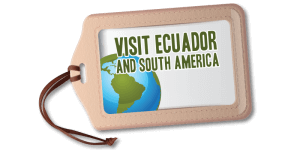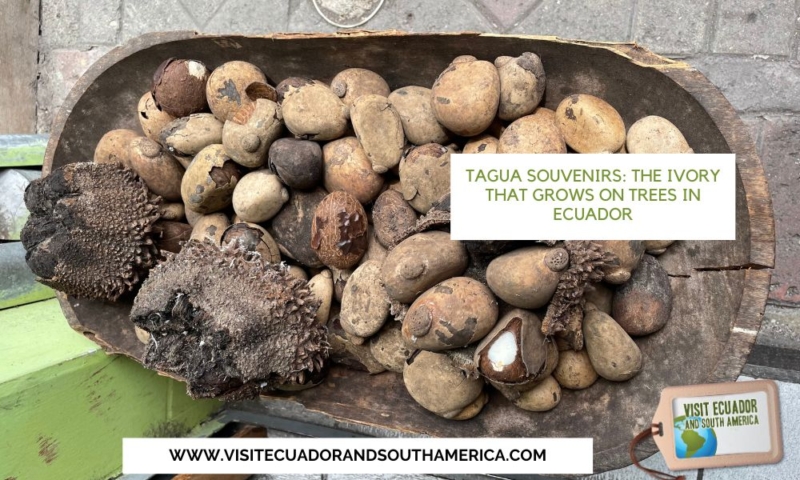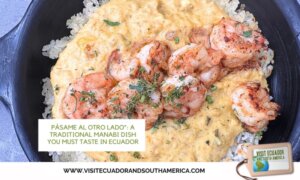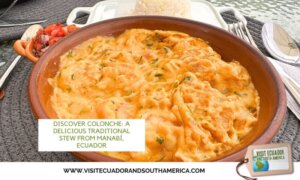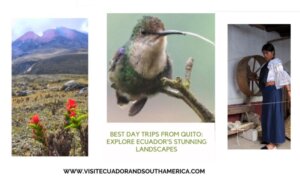Tagua Souvenirs: The Ivory That Grows on Trees in Ecuador
Maybe you have heard about vegetal ivory, or tagua before. The tagua nut is important for the tourism and souvenir industries in Ecuador. One of the uses it has is to make beautiful jewelry and decoration.
When exploring Ecuador, you’ll discover a hidden gem in the world of souvenirs—Tagua. Known as “vegetable ivory,” Tagua is a sustainable material used to craft exquisite jewelry and decorative items. This unique product allows you to take a piece of Ecuador’s natural beauty home while supporting eco-friendly practices.
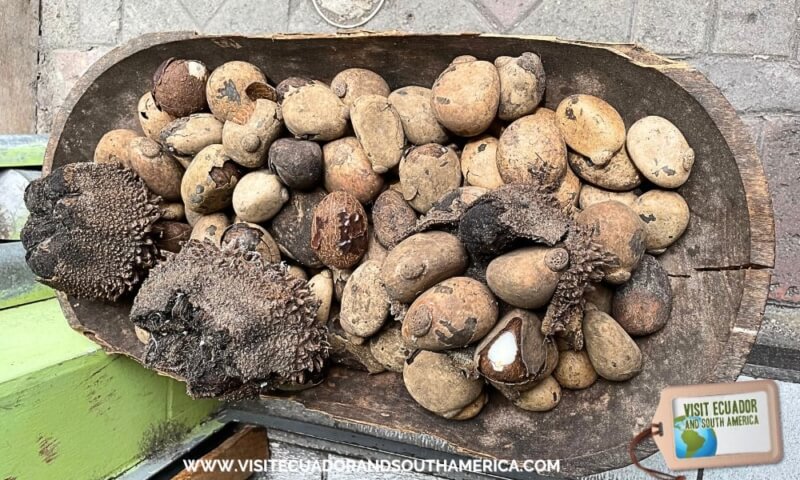
Discovering Ecuador
Ecuador offers more than just breathtaking landscapes and rich culture. It’s a place where tradition meets sustainability, especially in the craft markets. While exploring local markets, you’ll find Tagua products prominently displayed. These items are not only beautiful but also carry a deep environmental significance, making them the perfect memento.
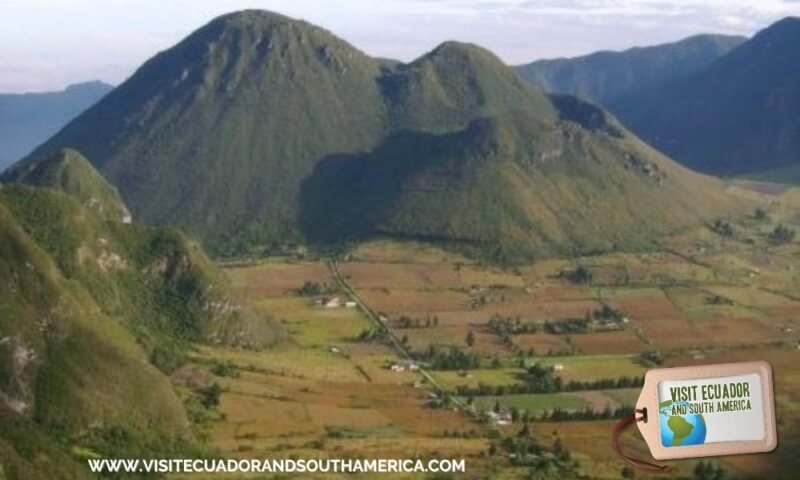
Galapagos and Beyond
A trip to the Galapagos Islands will likely be on your itinerary. Here, you can find unique Tagua souvenirs that reflect the islands’ natural wonders. From sea turtle-shaped pendants to intricate earrings, these pieces are inspired by the local wildlife. Don’t miss the opportunity to bring back a piece of this enchanting archipelago.
If you want to combine emotional healing with exploring the islands, then join us for this women’s retreat March 12-19 2025.
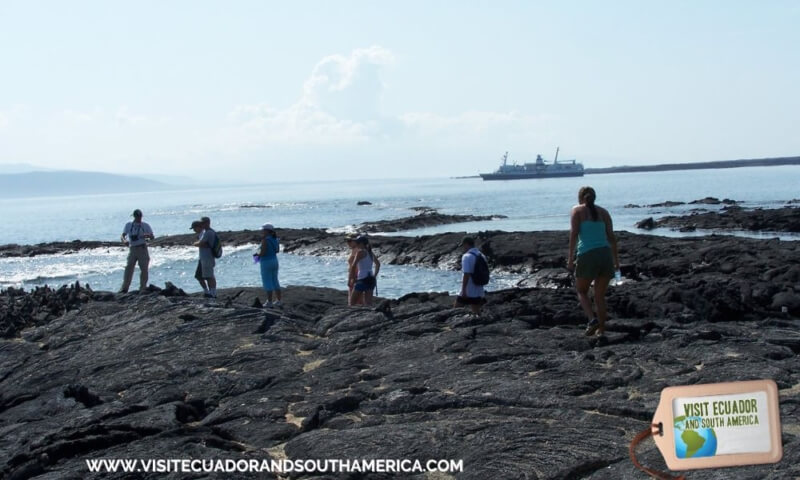
What is tagua?
The Tagua nut grows in a palm tree and is original of Ecuador. Its scientific name is Phytlephas Macrocarpa. The surface of the nut once carved looks like ivory, which makes it unique in the world.

These plants are wild and were not planted, in their native state these plants grow on land that goes from 600 to 1500 meters above sea level. They grow in mountainous areas and rainy tropical land and they are very resistant to pests and diseases. One of its characteristics is that it has a high level of development compared to other plants and to harvest them after germinating takes very long periods ranging from 15 to 20 years for which it needs a certain amount of light from its initial state until maturity.
Souvenirs made of tagua
When the seed of the tagua detaches from its wrap, which is known with the name of Mococha, it takes 3 to 6 months for the product to be dry and ready to be processed in artistic crafts.
The weight of the seed ranges from 1.50 to 3 ounces the smallest and up to 8 ounces the largest
After carefully selecting the tagua seeds and verifying that they are dry, they can be used to make handcrafts. These are decorative figures, necklaces, bracelets, crafts, key rings, among many others.
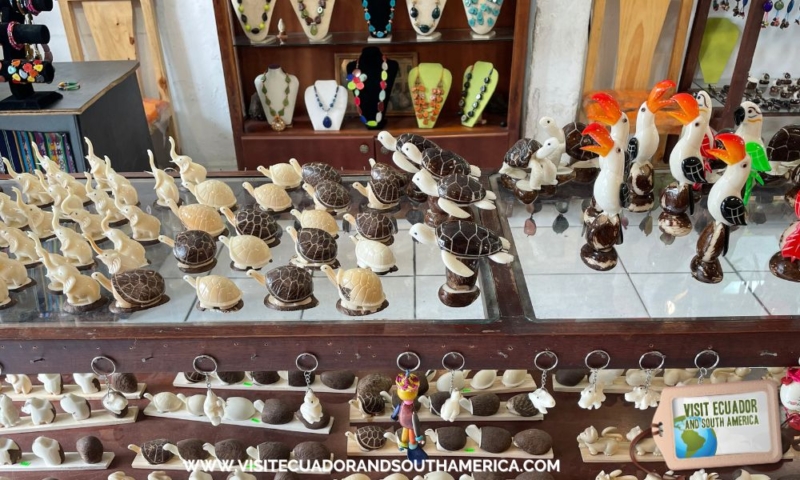
 If you are in South America I would love to see your pictures.
If you are in South America I would love to see your pictures.
The Marvel of Tagua
Tagua is harvested from the tropical forests of Ecuador. Resembling ivory, Tagua is white, smooth, and hard when polished. The plant, Phytelephas aequatorialis, produces nuts similar to ivory but without the environmental harm. Unlike elephant or rhino ivory, Tagua is a cruelty-free alternative, promoting wildlife conservation.
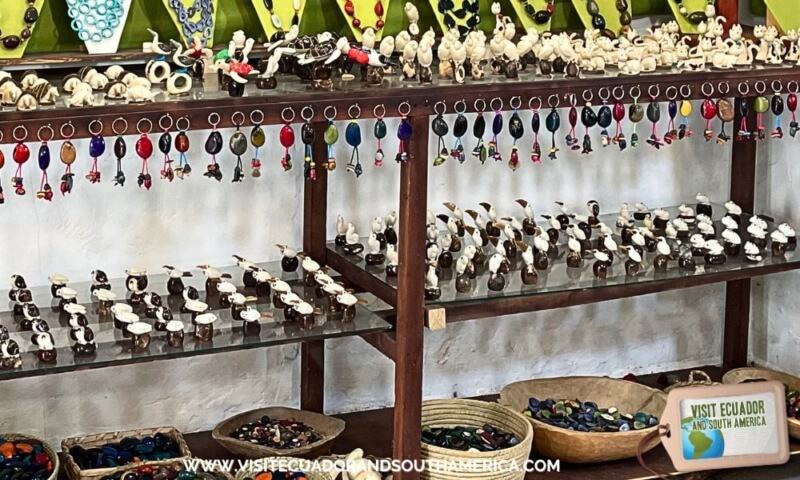
Crafting Beauty from Nature
Artisans collect the nuts from Tagua palms, which take 14 to 15 years to mature. These trees yield three crops annually, with each crop providing enough material for intricate jewelry and art. The nuts are polished and crafted into stunning pieces such as bracelets, necklaces, and decorative items. Each piece carries the essence of Ecuadorian craftsmanship and sustainable practices.
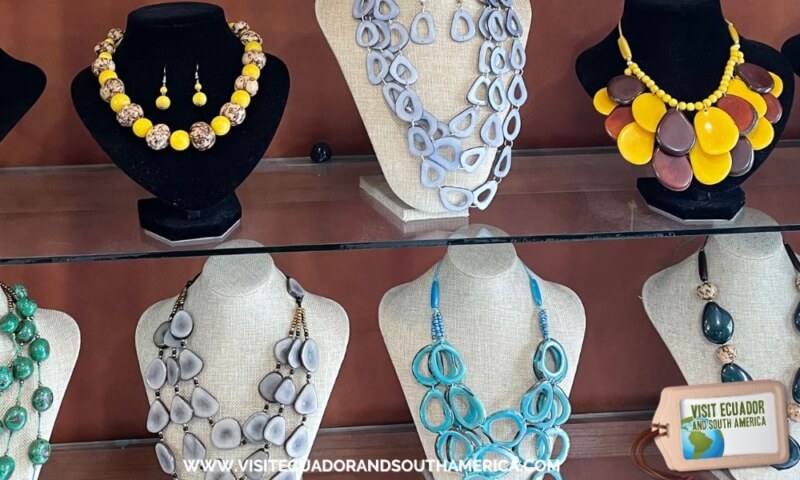
Other uses
The branches of these trees are also used for the roofs of houses in the province of Manabi. These are extracted when they are still green, then they are dried and sold under the name of Cady. Fiber is also obtained from this plant to make ropes.

Conclusion
So if you are planning on visiting Ecuador my suggestion for what to buy and some must-have artisanal souvenirs to get include tagua souvenirs. For most options, visit this blogpost.
Tagua souvenirs offer a beautiful way to remember your visit to Ecuador. They are not just souvenirs but symbols of sustainability and conservation. By choosing Tagua, you support local artisans and protect endangered species. So, next time you’re in Ecuador, make sure to pick up a piece of Tagua—the ivory that grows on trees.
There are some beautiful necklaces that I love and take as gifts when I travel back from Ecuador.
If you found this post inspiring and helpful, We would appreciate it if you would pin, share or tweet this page on any social media platforms you use!
Every little bit will help us fund our travels to continue bringing great content to our site.
PIN IT FOR LATER

Don´t just dream it, make it happen. Plan your South American trip with a local!
Take a look at this list of travel resources to plan your trip and travel in South America.
I invite you to follow me on Facebook, Twitter, Pinterest and Instagram. In addition, you can subscribe on YouTube.
You can also send an email to get help planning your trip, with packages and tours: info(at) visitecuadorandsouthamerica(dot)com
